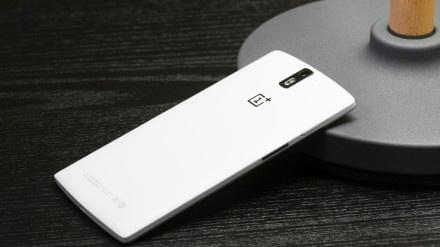"Originally we also held the determination to persist in fighting, but the mobile phone industry's shuffle is faster and more cruel than expected," said Ding Xiu, CEO of Coca-Cola, in an open letter from the Big Cola smartphone. Outside Coca-Cola, a large number of small manufacturers such as Amoi, Tianyu, IUNI, and Origin have also been bleak. Earlier, the industry had aroused a big discussion on how domestic smart phone manufacturers could live in the future.
All kinds of signs indicate that the current smart phone market has faced a slowdown in growth, and the market dividends have disappeared. The days of domestically-made smart phone manufacturers have no previous moisture, but they have ushered in difficult times, and the impact of this kind of difficulty on small-scale manufacturers is particularly evident.
Why do you say this?
The reason is that although competition has never been cut off, the intensity of competition has not been the same in different periods. After the disappearance of the industry dividend period, manufacturers will undoubtedly become more difficult to achieve growth and development. The acceleration of internal strangulation is inevitable. When small manufacturers face big players with advantages in terms of size, channels, promotion, and funds, they obviously do not have more rebellion and their survival will undoubtedly become more difficult. This kind of hardship reflected in reality is that big manufacturers such as Coca-Cola, Amoi, Tianyu, IUNI, Origin and so on have just left the market. Chinese mobile phone manufacturers have dropped by 136 in just one year.

In this reality, let us also doubt: In the future, will the market leave opportunities for survival for small-scale manufacturers?
This issue is actually quite controversial. If we look at the advantages of the above-mentioned manufacturers, the future of small-sized companies is likely to be pessimistic. As mentioned above, a large number of small-scale manufacturers have already left. However, if you look into the side of the mountain, you may see different landscapes from another angle. We have seen that another group of small manufacturers still survived in the present and had a loyal customer base in the market. They achieved good results in the relevant price range markets.
The difference behind the situation may be the key to the survival of the small manufacturers in the future. The success or failure, summed up, personally think that: small manufacturers in the future to survive, the need is to abandon the low-end market cost-effective shopping, focus on the high-end market; seize the personalized market demand, focus on brand positioning, target users Group; identify appropriate markets, use channel promotion skillfully, and enhance brand image.

1. Abandon the low-cost market price of shopping, focus on the high-end market
We have seen many small manufacturers entering the market. The favorite routine is to cut in from the low end. Using cost-effectiveness as a weapon, we start from the very beginning with low-cost and low-cost routes in an attempt to open up the market and accumulate popularity before attempting to target the high-end market. . However, in reality, no one has achieved success on this road. Instead, he has gone from the road to the valley of death.
The reason is that compared to the big manufacturers, you can't afford to play with low-end, cost-effective games. Here is a very simple truth: the small companies that have neither capital nor mass and channel advantages, want to play with cost-effective, but in any case also play the big manufacturers, and ultimately play only dead.
For example, the Coca-Cola, which once claimed to be a cell phone that earned only 10 yuan, had a good response in the early days, but its follow-up was the red rice world in terms of cost performance. However, in reality, even Xiaomi has been countered by cost-effectiveness. In the near future, we have also seen many reflections on the price/performance ratio. For example, Zhou Hongxuan used to believe that hardware can be implemented for free and the ultimate cost performance can be implemented. However, in the near future, it is also recognized that hardware freeware is unrealistic and hardware should have a premium.
In this reality: For small manufacturers, abandoning the low-end price-performance competition is actually quite necessary. Small-scale manufacturers should make efforts to fight and die. The markets are not low-end cost-effective markets, but should be mid-to-high-end markets.
In the high-end market, compared with the low-end market, not only can we avoid the tragic price war in the country, but also help capture high-end users, and establish a higher user sincerity to tap the broader moat, can be described as killing two birds with one stone. Among the small manufacturers, we have seen that no cost-effective shopping has been carried out from the very beginning. Instead, the price has been set at the mid-to-high-end prices of domestic, high-end, plus-plus, hammer, and Mito mobile phones. The high-end market has its own stable user base, and its products can still stir up.

2. Grasp the personalized market demand, carry out a clear brand positioning, target the target user group
With the advent of the consumer upgrade era, consumers have become more demanding for personalized needs. This demand, or brand concept, or main function. Large players are limited to mass-market reasons and are more focused on the mass market. It is difficult to take care of the niche market for personalized demand. This is also one of the ways in which large manufacturers leave their products to small vendors. If small companies can grasp the personalized market demand, carry out a clear brand positioning, and successfully create their own distinctive (brand concept, main function), they can also gain the opportunity to survive in the market.
For example, when he wrote the hammer dilemma, I once said that the fans of Lao Luo had formed emotional resonance, values, and products of hammer technology because of Luo Luo’s idealism, feelings, and paranoia. Support to express. And this also provides a space for the hammer to survive in the vertical market segment, making hammer technology small and beautiful. In addition to the hammer, the addition of a mobile phone is also an example. From the very beginning, it has adopted the concept of “not to behave†as a brand idea, and has obtained the attention of those consumers who pursue life. The first two are the victories of the concept. In addition to the concept, the shaping of functions can also provide space for manufacturers. Such as Mito mobile phone, starting from its own good at beauty field, relying on the previous accumulation of users, word of mouth advantage, with a functional self-portrait as the core, continue to build its core competitiveness in self-timer. In the current era when productivity is valued and self-timer has become the core competitiveness of smart phones, women’s consumers’ favor has allowed them to flee in the small market.

3. Identify the appropriate market, use channel promotion skillfully, enhance brand image
Just as orange Huainan is orange, born in Huaibei it is wolfberry. For smart phone manufacturers, not all vendors are suitable for the same market. Finding markets that are conducive to their survival and development, and vigorously cultivating them, are also opportunities for small companies to survive in the future.
Looking ahead, such as the one-plus-one mobile phone has been quite successful in the market search. OnePlus's mobile phone has not selected the mobile phone sales area in the domestic market like other domestic mobile phone entrepreneurs in the selection of its product sales and marketing area. Instead, it has promoted it to internationalization at the beginning of the sales of mobile phone products at Inga. For overseas markets, such as the United States and India. If it is from the distribution ratio of sales results, it can be said that one-plus-plus mobile phones form a sales strategy based on overseas sales and supplemented by domestic sales to some extent.
This kind of sales strategy not only avoids the fierce domestic price war to a certain extent, but also makes one-plus mobile phones more profitable. In the success of the European and American markets, the respected and endorsed media from European and American consumers and evaluation media also increased the status of one-plus-one mobile phones in the minds of domestic consumers to a certain extent, and consolidated the mid-to-high-end brand image of one-plus-one mobile phones. To a certain extent, promote the domestic sales of one-plus-one mobile phone. It can be said that one-plus-one mobile phone has achieved a devious counter-attack against competitors through the use of overseas channels.
To sum up:
For small vendors, although the industry may not be optimistic about the future, especially the challenges, but the small manufacturers are not no way to live. Grasping new opportunities, making efforts, dying in the high-end market, creating personalized market demands, and finding a suitable soil for their own survival, small manufacturers may also be able to live well in the future.